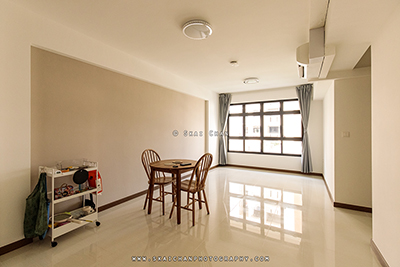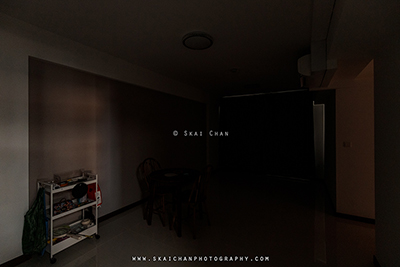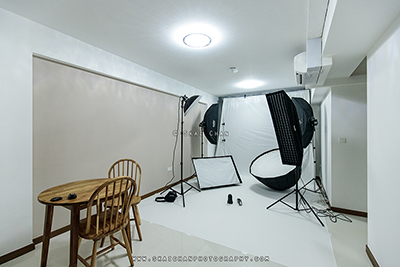The True Cost of Home Studio Photography
Built with Sweat, Sacrifice and a Whole Lot of Heart.
 2. Eliminated sunlight from windows
2. Eliminated sunlight from windows
 3. Studio is ready
3. Studio is ready

Above: The transformation of my home into my humble photo studio when there's fewer furniture
Introduction
First of all, thanks for taking the time to check out the behind-the-scenes process of setting up my home studio. Spoiler alert: it's not all glamorous lighting and perfectly smooth backdrops—it's more like a workout that doubles as art.
On a more personal note, my wife and I have had to make some tough calls to keep the studio up and running. We both dreamed of having a cosy, functional home where we could host friends and family. But with the studio taking up space, we've had to push that vision aside. Big furniture? Out of the question. Everything has to stay portable and easy to move around. It's not ideal, especially since we'd always imagined making our home fully functional. I feel bad about the compromise, especially for my wife, but for now, the studio takes priority—and we're making it work.
The Tedious Reality of Setting Up My Home Studio
A home studio setup might seem simple—until you're the one sweating through half a day of prep. From rearranging furniture to chasing perfect light, it's a full-body workout long before the camera's even switched on. And the client? They haven't even arrived yet. Here's what that madness looks like behind the scenes.
- Concept Planning Takes Mental Gymnastics
Every shoot begins with deep thought—not just about poses or outfits, but the exact mood, lighting style, and visual tone we want to create. This means spending hours mentally mapping out the most suitable gear: backdrop colours, types of softboxes, lighting modifiers, and more. It's not a one-and-done deal—ideas evolve, and the setup has to evolve with them.
- Furniture Tetris
Once the creative direction's locked in, it's time to reconfigure the space. That means shifting furniture—often repeatedly—just to make room for the backdrop and lighting. In a compact Singaporean home, this becomes a real-life game of Tetris with zero margin for error.
- Cleaning to Protect the Gear
Before any gear goes up, I do a quick clean. Not for looks—but to prevent dust and dirt from getting onto sensitive equipment, fabric backdrops, or cables. Clean floors mean safer gear and fewer editing headaches later. It also ensures my clients feel comfortable in a tidy space.
- Backdrop Setup: The Unexpected Time Thief
This one's a beast. I've got to mount the system securely, align it perfectly, and then battle the cloth backdrop—steaming or stretching out those stubborn creases. This task alone can take longer than anything else. Any professional photographer knows: get it right in-camera, or suffer later in post.
- Lighting Setup: Not a Plug-and-Play Deal
Each light—whether a softbox, beauty dish, or strobe—takes 15 to 20 minutes to assemble and position. Multiply that by three to five light sources (or more), and the setup time becomes a serious commitment. And that's before the tweaking even begins.
- Light Testing and Final Adjustments
With everything in place, it's time for test shots. I fine-tune exposure, adjust angles, and tweak lighting ratios. Sometimes it flows, other times I need to tear down and redo parts of the setup to get the look just right. It's all part of the process.
Restoration of my Home
- Dismantling Everything
After hours of shooting, there's no rest. Every single piece of equipment needs to be carefully dismantled, packed away, and stored properly. This can take another few hours, especially when fatigue begins to set in.
- Cleaning Up the Space Again
Once the gear is cleared, the studio (read: my home) has to be cleaned and reset so it's liveable again. It's a part clients rarely see—but it's essential, and time-consuming.
- Injuries Are Just Part of the Job
Heavy gear, sharp edges, awkward lifting angles—it's a recipe for scrapes, bruises, and the occasional pulled muscle. Velcro scratches and finger pinches are common. I've lost count of how many times I've cut myself setting up lights or caught my hand in a backdrop clamp. It's all in the name of getting that one perfect frame.
please show some appreciation by following me in Facebook and Instagram.
Do check out my other useful photography tips!
Updated: Wed, 23 July 2025